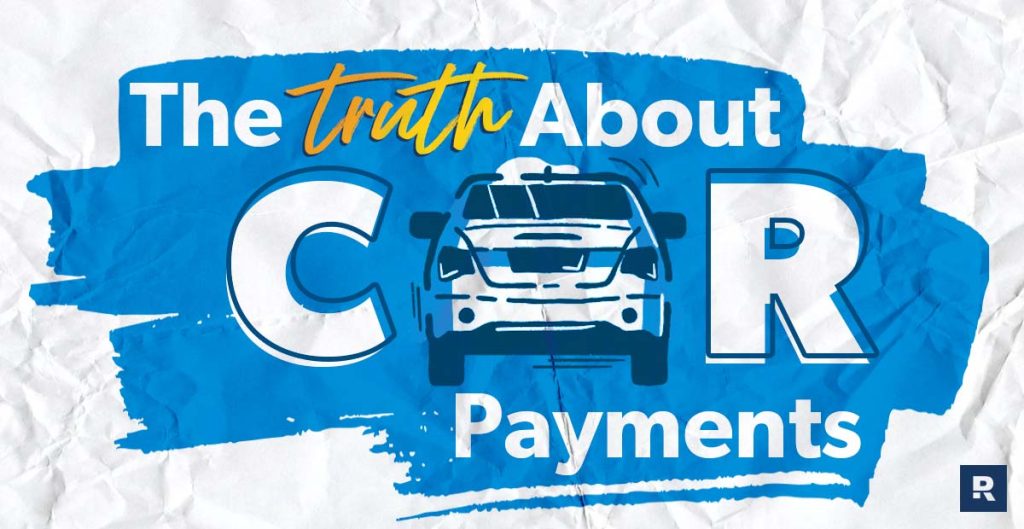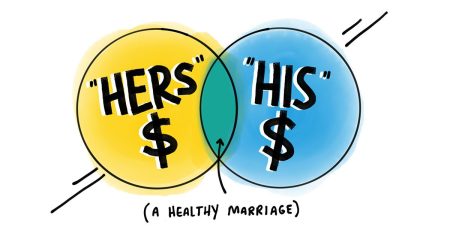Thinking about buying a new (or new-to-you) car? Before you take out a car loan from the first dealer who gives you the thumbs-up, you need to make sure you know exactly what you’re signing up for—and how much it’ll really cost you.
Right now, the average car payment is $734 for a new car and $525 for a used car.1 But you could end up paying even more per month, depending on the interest rate, your credit score and the type of auto loan you take out.
Buckle up! We’re breaking down how car loans and car payments work—so you can know all your options before you get behind the wheel of your new ride.
What Is a Car Loan?
What Is a Car Note?
What Is the Average Car Payment?
How Car Payments Are Calculated
How Car Loans Work
The Real Cost of a Car Payment
How to Lower Your Car Payment
Budget for the Car You Want
Car Payment FAQ
What Is a Car Loan?
An auto loan (also called a car loan) is a type of loan that lets you borrow money to purchase a vehicle. Most people take out a car loan because they don’t have the money to pay for a car up front in cash.
But it’s important to know that when you take out an auto loan to purchase a vehicle, you technically don’t own the car. Your lender owns the car, and they’re letting you drive it with the promise that you’ll pay them back (plus interest) in fixed installments over a certain amount of time.
What Is a Car Note?
A car note is the monthly payment you make on your car loan. Your car note (aka car payment) includes the principal (the original loan amount you borrowed), as well as interest and fees. The higher your loan amount or interest rate, the higher your monthly payment will be.
What Is the Average Car Payment?
The average car payment is a whopping $734 for a new car and $525 for a used car. And the average interest rate is 6.84% for a new car loan and 12.01% for a used car loan.2
Keep in mind, these are the averages. You could end up paying more per month, depending on the type of auto loan you take out.
|
Average |
New Car |
Used Car |
|
Monthly Payment |
$734 |
$525 |
|
Loan Amount |
$40,927 |
$26,248 |
|
Interest Rate |
6.84% |
12.01% |
|
Loan Term |
68.48 months |
67.41 months |
|
Credit Score |
753 |
6893 |
How Car Payments Are Calculated
There are several factors that determine your monthly car payment, including:
- Loan Amount: the amount of money you borrow to buy the car (also called the principal)
- Interest Rate: the percentage of the loan you’re charged for borrowing money (The APR—or annual percentage rate—includes the interest rate and other fees.)
- Loan Term: the number of months it will take you to pay off the loan
- Down Payment: the amount of money you pay up front for the car
- Trade-In Value: the amount of money a dealership will give you for your car if you trade it in for another car
Car payments are calculated by dividing the loan amount (plus interest and fees) by the loan term. So, for example, if the total loan amount is $26,700 and the loan term is 60 months, the monthly payment would be around $445 ($26,700 ÷ 60 = 445).
How Car Loans Work
The exact details of how you get a car loan depend on the kind of financing you go with: direct or indirect. Either way, you have to apply and be approved by a lender for an auto loan. This could be through a bank, a car dealership or an online lender.
If you’re preapproved for a car loan, you can go to a dealership to pick out a car and negotiate the price. Then you sign some paperwork, confirming the loan and your promise to pay it back in monthly installments (aka your car payment).
Otherwise, you can go to a dealership, pick out a car, and then work with their in-house finance department to get an auto loan. But heads up: This route usually ends with you buying a car you can’t afford because you fall in love with the car before you know the monthly payment.
And remember: Even though the dealer hands you the keys, you don’t actually own the car until you pay off the auto loan in full and get the car title from the lender. Until then, you’re at the mercy of your lender and your monthly car payment. And if you fall behind on your payments, you risk going into default and having your car repossessed (which is about as fun as it sounds).
A Quick Note About Car Leasing
The dealership may try to get you to lease a car if you’re short on funds, but it’s not the same as an auto loan. The monthly payments may be lower, but that’s because you only get to drive the car for a certain period of time. It’s basically a glorified rental car that you don’t get to keep! Leasing is the most expensive way to drive a car—and you should steer clear of it.
The Real Cost of a Car Payment
Okay, so now let’s talk about how auto loans play out in real life.
Imagine you purchase a brand-new Honda from your local dealership for $33,000. You have no money to use as a down payment, but you’re able to get about $8,000 for your current vehicle. You get preapproved for a $25,000 auto loan at a 6.84% interest rate (the average for a new car). If you agree to pay back that car loan monthly for the next 60 months, that leaves you with a car payment of $493 a month.
That’s already a huge chunk coming out of your paycheck every month. But the real kicker? You’ll end up actually paying $29,589 for the car loan when all’s said and done. That’s more than $4,500 you’ll have to pay just in interest! You don’t have to be Mark Cuban to know that’s not a good deal.
Plus, what the dealer won’t tell you is that all cars depreciate (or go down in value). In fact, your new car will lose 60% of its value within the first five years!4 So for our Honda example, you’ll have paid almost $30,000 for a car that’ll only be worth around $13,000. Oof.
And if your car loses value faster than you make your payments, you’ll end up with an upside-down car loan on your hands—and boy, is that a mess to deal with!
The good news? There is a better way to get a car.
How to Lower Your Car Payment
Car payments add a huge weight to your life, both financially and mentally. Here are some things you can do to get that number down:
Buy used over new.
Not only are used cars significantly cheaper, they also don’t depreciate as fast as brand-new cars do. And don’t believe the myth that new cars are automatically safer or less expensive to repair than used cars—that’s not always the case! Even if you choose to get a car that’s a couple of years old versus brand spankin’ new, you’ll save so much more money than if you finance the latest model.
Sell your current car privately instead of trading it in.
When you trade in your car at the dealership, you’re usually getting the short end of the stick. After all, their goal is to give you as little as possible for your car so they can turn around and sell it to the next guy for more. That said, you’ll have better luck selling your current car through a private sale where you can set your own asking price and negotiate a better deal.
Make a larger down payment.
Yes, it’s tempting to just take out an auto loan for the full amount if you’re approved for it. But the more money you borrow, the more you’ll have to pay each month. So do what you can to bring a larger down payment to the table. Even if it means pausing your car shopping while you save up, every extra dollar means less money you’ll have to pay in interest and fees. Trust us, it adds up!
Pay in cash.
Speaking of large down payments . . . the best way to lower your car payment is to pay for your car in full and up front—without a car loan. Why? Because it lowers your payment to zero and saves you thousands of dollars in interest and fees. Plus, you (not the bank) own your car free and clear!
We know, we know. Paying for a car in cash may seem way out of your reach right now. But what if you bought a cheaper car—nothing fancy—just to get around for 10 months or so? That way, you can have something to drive while you save for a better one.
Here’s how it could work: If you take that $489 car payment you would’ve had and put it into your savings instead, after 10 months, you’ll have saved $4,890! Add that to the $1,500–2,000 you can get for your beater car, and you’ll have over $6,000 to buy a used car with cash. If you consistently save, you’ll be able to keep upgrading your ride—without owing the bank a single dime in interest!
Budget for the Car You Want
Getting a new (or new-to-you) ride? It all starts with a budget.
A budget helps you make sure you’re getting a car you can actually afford. Because the last thing you want to do is chain yourself to a massive car payment for the next five years—especially when you’ve got other money goals you’re trying to reach.
If you’re not already budgeting, now is the time to start. With the EveryDollar budgeting app, you can easily make a plan for your money every month and save up for the car you want. Go ahead and create your free budget with EveryDollar today!
Car Payment FAQ
Read the full article here










